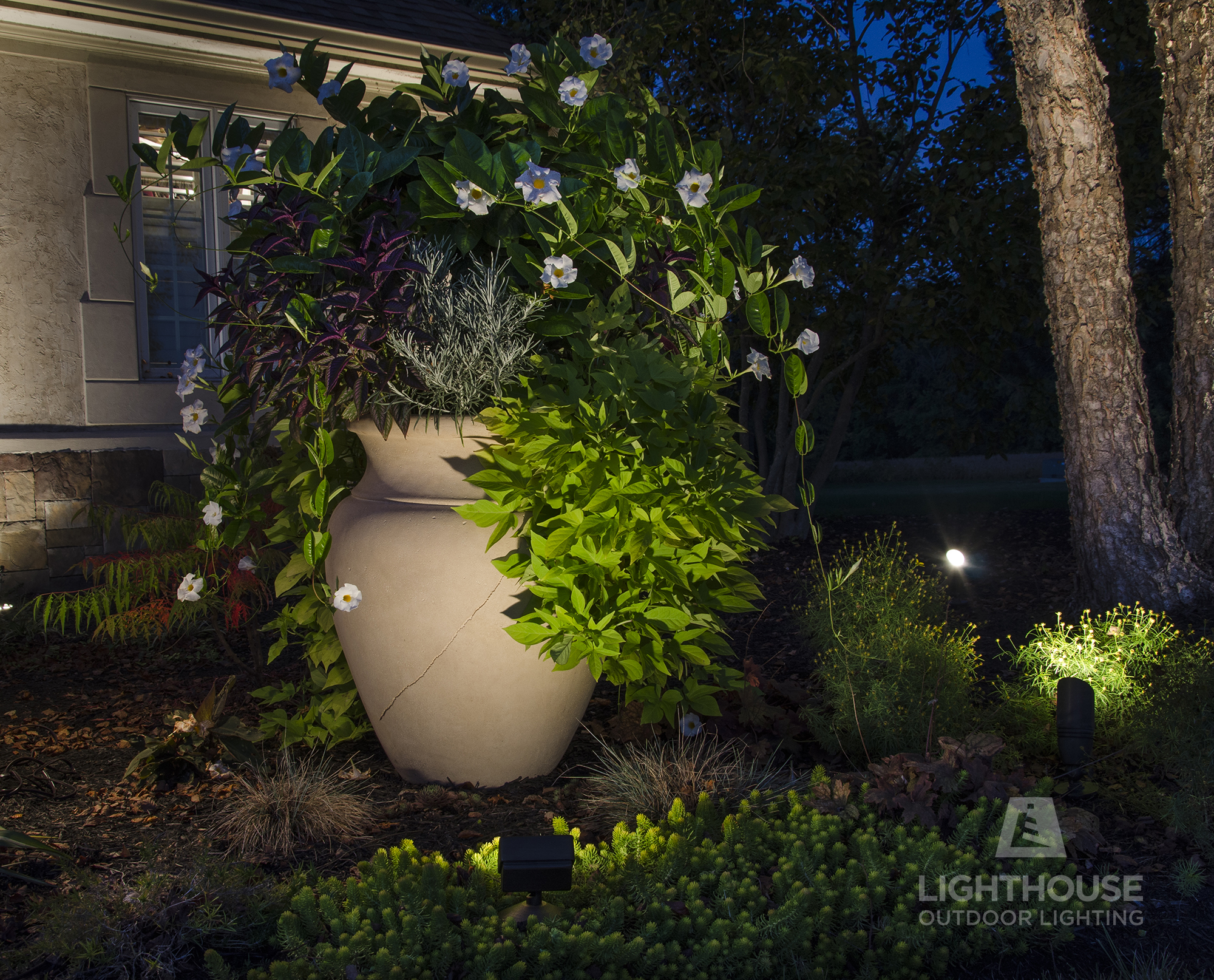1) WHERE WILL THIS ART BE VIEWED FROM? Garden art can be displayed prominently or the client may decide to tuck it away in a secret corner of the garden that can only be viewed with some exploration and discovery by guests. Is it viewed from a main window from inside the home? knowing your primary view angles will heavily dictate the placement of light sources.
2) LIGHT FROM ABOVE OR BELOW (OR BOTH)? Personal taste is a factor for this one to a degree, however knowing if the art is displayed in a public square or if it is tucked away in a small garden corner will heavily influence the lighting technique, lumens needed and the balance of light vs shadow desired. Uni-directional light from a single source will emphasis the contrast between light and shadow and will create a subtle but dramatic effect to statuary. In public spaces, art is generally viewed from all sides with a more general wash of light across an object, however this is not a hard and fast rule and the designer should look at more creative ways to illuminate these objects which leads us to the next point.
3) MOUNTING LOCATIONS: The ultimate goal with art illumination is to conceal the light sources as much as possible so they don’t distract from the art being viewed, this also includes reducing and eliminating incidental glare from light sources. If there is over-head support for light fixtures such as in trees and built structures, then some concealed down lights can be a nice touch with highly focused beams. A side benefit of downlighting your piece will be that you will also slightly illuminate the surroundings which will contextualize the art in its surroundings. If overhead mounting options are too far from the art piece, a thin wire cable with a pendent light over the art can be considered if it bisects the area precisely where it is needed. Finally, the piece can be illuminated from below by placing lights at its base. Take care to conceal the light sources so there is no glare and leave enough room to eliminate “hot spots” on the art piece, particularly if it is light in color.
There are of course more considerations for art and light placement, however this will suffice for now. A good designer will experiment a bit with these options to bring out the best details in their clients art pieces until he has developed pretty good “night vision” to be able to pre-visualize the effects and understand the possibilities of the environment the art is placed within.




